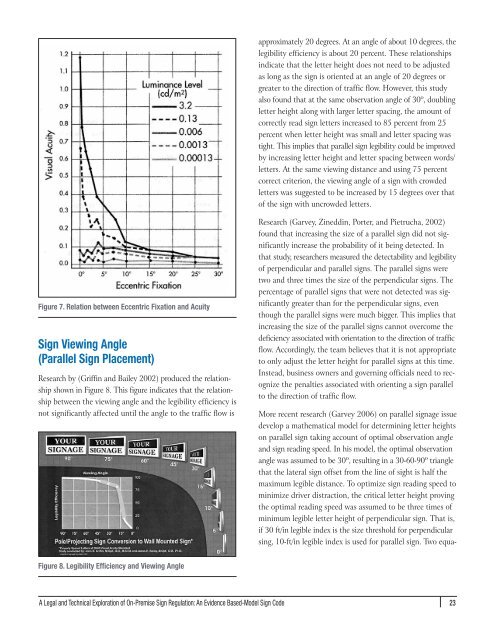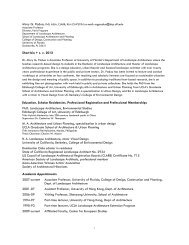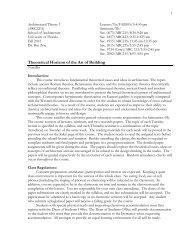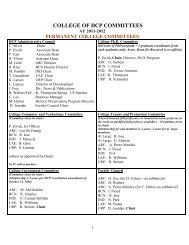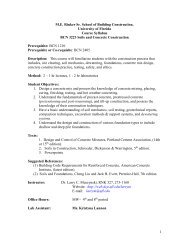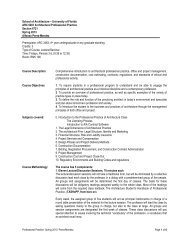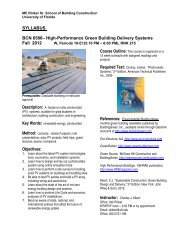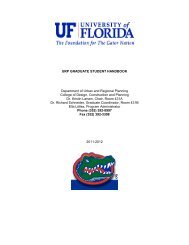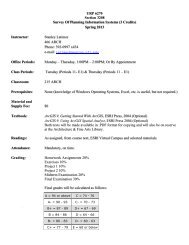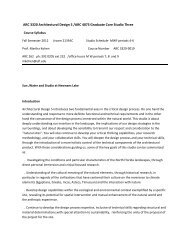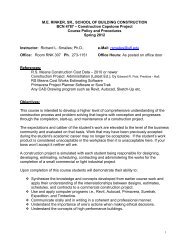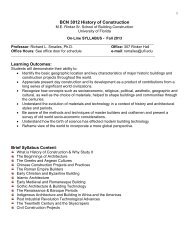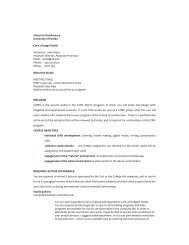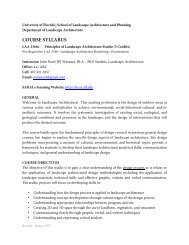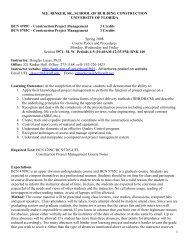An Evidence Based Model Sign Code - College of Design ...
An Evidence Based Model Sign Code - College of Design ...
An Evidence Based Model Sign Code - College of Design ...
Create successful ePaper yourself
Turn your PDF publications into a flip-book with our unique Google optimized e-Paper software.
approximately 20 degrees. At an angle <strong>of</strong> about 10 degrees, the<br />
legibility efficiency is about 20 percent. These relationships<br />
indicate that the letter height does not need to be adjusted<br />
as long as the sign is oriented at an angle <strong>of</strong> 20 degrees or<br />
greater to the direction <strong>of</strong> traffic flow. However, this study<br />
also found that at the same observation angle <strong>of</strong> 30º, doubling<br />
letter height along with larger letter spacing, the amount <strong>of</strong><br />
correctly read sign letters increased to 85 percent from 25<br />
percent when letter height was small and letter spacing was<br />
tight. This implies that parallel sign legibility could be improved<br />
by increasing letter height and letter spacing between words/<br />
letters. At the same viewing distance and using 75 percent<br />
correct criterion, the viewing angle <strong>of</strong> a sign with crowded<br />
letters was suggested to be increased by 15 degrees over that<br />
<strong>of</strong> the sign with uncrowded letters.<br />
Figure 7. Relation between Eccentric Fixation and Acuity<br />
<strong>Sign</strong> Viewing <strong>An</strong>gle<br />
(Parallel <strong>Sign</strong> Placement)<br />
Research by (Griffin and Bailey 2002) produced the relationship<br />
shown in Figure 8. This figure indicates that the relationship<br />
between the viewing angle and the legibility efficiency is<br />
not significantly affected until the angle to the traffic flow is<br />
Research (Garvey, Zineddin, Porter, and Pietrucha, 2002)<br />
found that increasing the size <strong>of</strong> a parallel sign did not significantly<br />
increase the probability <strong>of</strong> it being detected. In<br />
that study, researchers measured the detectability and legibility<br />
<strong>of</strong> perpendicular and parallel signs. The parallel signs were<br />
two and three times the size <strong>of</strong> the perpendicular signs. The<br />
percentage <strong>of</strong> parallel signs that were not detected was significantly<br />
greater than for the perpendicular signs, even<br />
though the parallel signs were much bigger. This implies that<br />
increasing the size <strong>of</strong> the parallel signs cannot overcome the<br />
deficiency associated with orientation to the direction <strong>of</strong> traffic<br />
flow. Accordingly, the team believes that it is not appropriate<br />
to only adjust the letter height for parallel signs at this time.<br />
Instead, business owners and governing <strong>of</strong>ficials need to recognize<br />
the penalties associated with orienting a sign parallel<br />
to the direction <strong>of</strong> traffic flow.<br />
More recent research (Garvey 2006) on parallel signage issue<br />
develop a mathematical model for determining letter heights<br />
on parallel sign taking account <strong>of</strong> optimal observation angle<br />
and sign reading speed. In his model, the optimal observation<br />
angle was assumed to be 30º, resulting in a 30-60-90º triangle<br />
that the lateral sign <strong>of</strong>fset from the line <strong>of</strong> sight is half the<br />
maximum legible distance. To optimize sign reading speed to<br />
minimize driver distraction, the critical letter height proving<br />
the optimal reading speed was assumed to be three times <strong>of</strong><br />
minimum legible letter height <strong>of</strong> perpendicular sign. That is,<br />
if 30 ft/in legible index is the size threshold for perpendicular<br />
sing, 10-ft/in legible index is used for parallel sign. Two equa-<br />
Figure 8. Legibility Efficiency and Viewing <strong>An</strong>gle<br />
A Legal and Technical Exploration <strong>of</strong> On-Premise <strong>Sign</strong> Regulation: <strong>An</strong> <strong>Evidence</strong> <strong>Based</strong>-<strong>Model</strong> <strong>Sign</strong> <strong>Code</strong> 23


